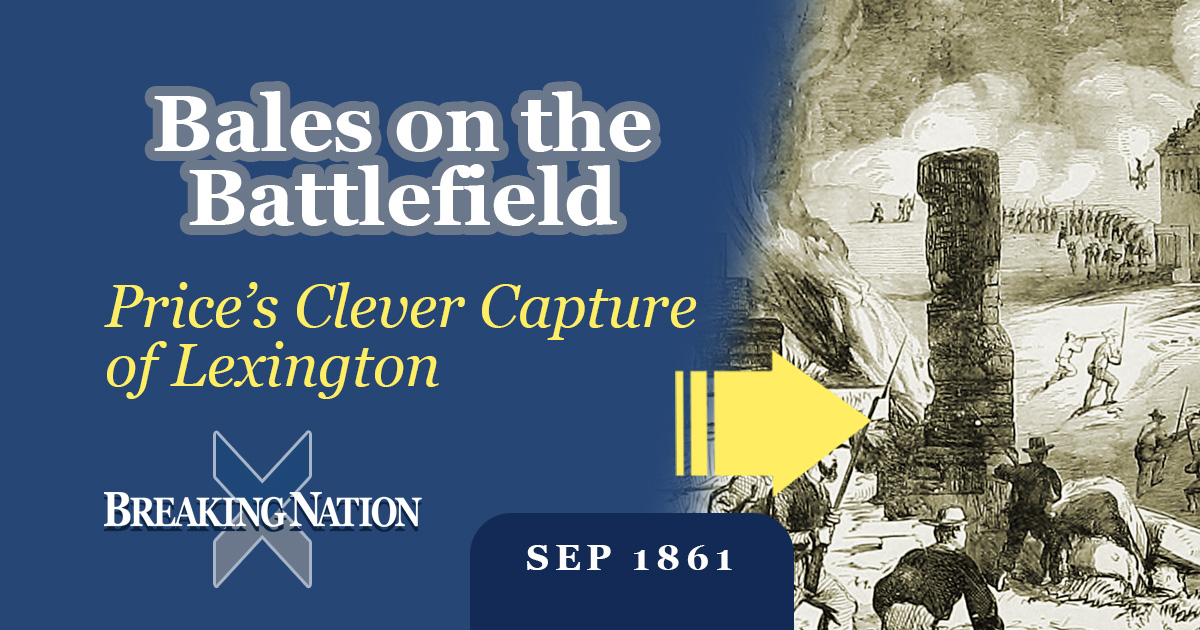High Stakes in the Heartland: The Civil War’s Hemp Bale Battle

The fighting around Lexington, Missouri, in September 1861—often called the Battle of Lexington or the “Battle of the Hemp Bales”—was one of the most notable early engagements of the Civil War in the Trans-Mississippi Theater. While overshadowed in popular memory by larger battles in the East, Lexington carried immense strategic, symbolic, and psychological significance for both Union and Confederate forces at this early stage of the war.
Lexington’s importance stemmed first from its location. Situated on the Missouri River, the town represented a key gateway between the northern and western reaches of Missouri. Control of the town meant influence over river transport and the ability to project power across the state—a crucial consideration given Missouri’s divided loyalties and its status as a border state. For Union forces under Colonel James A. Mulligan, holding Lexington was an attempt to assert federal authority in a region increasingly sympathetic to the Confederacy. Conversely, Confederate-aligned Missouri State Guard forces under Major General Sterling Price sought to reclaim the town and bolster southern influence in the state, both militarily and politically.
The battle itself was remarkable for its ingenuity. The Confederates, facing a well-fortified Union garrison, famously used hemp bales soaked in river water as moving breastworks. These bales allowed their forces to advance under cover toward Union positions, effectively neutralizing Mulligan’s defensive advantage. The tactical creativity displayed here demonstrated that the war in Missouri would be characterized by unconventional strategies, improvisation, and localized ingenuity—qualities that would define many western engagements.
Beyond tactics, the outcome of the battle carried symbolic weight. When Union forces surrendered on September 20, 1861, the victory was a major morale boost for the Confederacy and a stark warning to the Union that Missouri would not easily be subdued. For Confederate sympathizers, the triumph at Lexington reinforced the idea that local support could tip the balance even against federal troops. Conversely, the Union recognized that the struggle for Missouri would be protracted, requiring both military perseverance and political strategy to maintain influence.
In essence, the fighting around Lexington highlighted the intersection of geography, strategy, and local politics in the early Civil War. It was not merely a clash of armies but a contest over hearts and minds in a divided state. The battle foreshadowed the prolonged, often brutal nature of the war in Missouri, where control would shift repeatedly, and where innovation, leadership, and morale could prove just as decisive as numbers or firepower. Lexington, in its dramatic rise and fall, encapsulated the uncertainty, creativity, and high stakes of the Civil War’s western theater.
Breaking Nation: A Civil War Podcast explores the American Civil War, its turning points, and our national memory. Discover full episodes, transcripts, and resources at www.breakingnation.com — your destination for in-depth Civil War podcast content and fresh perspectives on America’s past. Listen on Apple Podcasts, Spotify and Amazon Music.




